Salsa dancing lands in Melbourne! For the fourth chapter on Salsa and Latin music in Melbourne, 1970 – 2008, we look at Latin music and Salsa as an identifiable phenomenon. To read about what led up to the events discussed in this blog entry, check out the previous post.
Salsa Dancing in Melbourne takes off…
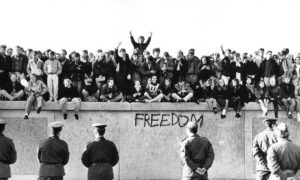
The falling of the Berlin Wall brought about new freedoms in the world.
It could be argued that the new acceptance of cultural diversity was symptomatic of change within the larger global system. The late 1980s were characterised by distinct political, social and economic features, such as the breaking-up of the Communist Bloc, the resurgence of numerous ethnic groups, international migration, and the heightened issues of multiculturalism and poly-ethnicity.
Moreover, the decade was marked by an increasingly more fluid international system, the reconfiguration of the world economic order, and the consolidation of the global media. The late 1980s, and the following decade, truly marked the triumph of neo-liberalism in the post-Cold War era, and the end of a bi-polar world had brought greater mobility and transience, along with urbanisation and rapid technological change. These developments foresaw greater possibilities in terms of what was possible in popular music. [1]
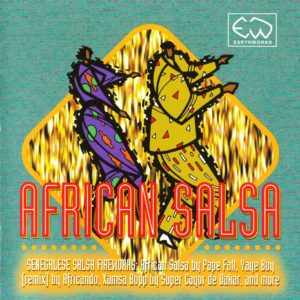
Record label ‘Earthworks’
The Arrival of World Music
From several of Beethoven’s symphonies to the music of Santana in the 1970s, the non-western has appeared in music heard by western audiences for centuries. Yet the late 1980s was a delineator of the ways that this took place.
Originally a marketing tag which referred to popular music outside of the normal Anglophone realm of popular music, world music sprung into existence in 1987, and it was primarily marketed by eleven British, American and European record labels, among them Globestyle, Charly, and Earthworks.[2]
While the ‘genre’ New York salsa fell within the marketability range of world music, the latter’s influence on Melbourne’s forthcoming salsa scene itself came not towards the end of the 1980s, but rather during the early 1990s. Despite this, the early years of world music ran concurrently with an era in which more commercially marketable and internationally popular styles of salsa had been on the rise.
The commercial era of Fania records had foreseen the emergence of new styles during the early 1980s, such as ‘salsa romántica (romantic salsa)’, headed by artists such as Oscar D’León, and which highlighted the music’s history of constant evolution, as instruments such as synthesisers, while not altogether new in salsa, rose in ubiquity. The end of the decade witnessed fusion and cross-over styles such as Latin hip hop and Latin house music, which were performed by the group Latin Empire and artist Rae Serrano, respectively, and which both liberally incorporated salsa components.[3] The late 1980s’ socio-political and economic state-of-flux had offered new possibilities in terms of cultural diversity.
In the same way that a humanistic approach of ‘one race, many cultures’ was being expounded in the philosophies of world music, similar attitudes towards celebrating non-western music as popular culture foreshadowed a new era which desired cultural diversity within music.[4]
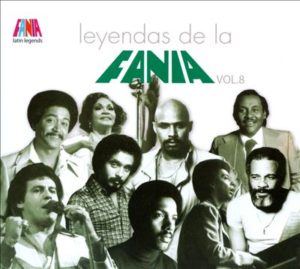
La Fania, the famous salsa record label from NY
Exploitation in World Music
There were, of course, other factors which drove people’s desire for cultural diversity within music during this era. World music, and its more up-tempo cousin world beat, wielded considerable power in terms of image in the marketplace. Both had become conflated to the status of genres, and the former, the most commonly known of the two, tended to appropriate musical styles from the third world, which ranged from the Algerian rai, to the Nigerian afrobeat and juju, as well as manufactured hybrid styles such as Anglo-Indian bhangra.[5]
Similarly, there existed 1980s’ popular quasi-world music fads, such as the French-Spanish Gipsy Kings, and French group Kaoma’s release, Lambada, a revamped copy of Bolivian folk group Los Kjarkas’ 1981 song Llorando se fue (He left crying). Lambada appropriated salsa dance moves into its pop music pastiche, creating anew ‘the Lambada’, otherwise known as the ‘dance craze from Brazil’.[6]
Around the same time, the expansion of the market for Latin music in general saw an increase in its popularity, with U.S.-marketed artists such as the Cuban Gloria Estefan being embraced by a broad spectrum of people.
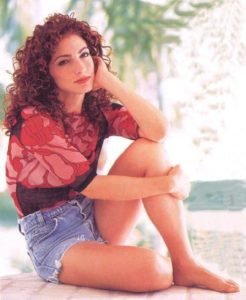
Latin music, along with ‘world music’ was being pushed onto an Anglo market in a general sense towards the end of the 80s and into the 90s.
Latin Music Grows…
With various styles of Latin music emerging from migrant groups in Australia, and a general shift in attitudes towards immigration and cultural diversity, all reinforced by the late 1980s state of transition, Latin music began to creep into the popular culture imaginary of a number of non-Latinos Australia-wide.
Caribbean music styles which bore a resemblance to salsa, such as chachachá and merengue had begun to gain popularity, but it was not long before salsa had appeared, and it was to take the lead in terms of popularity and ubiquity. While the large proportion of this salsa scene was taking place in Sydney,[7] Melbourne too, was to have its scene, and it was not long before the strident horns and the fast-paced syncopated rhythms of the Caribbean blend were being heard in a number of Melbourne’s venues.
The First Major Players in the Melbourne Scene
One of the biggest, and perhaps first proponents of salsa music in Melbourne was the group Combo la Revelación. Formed in 1986, Combo la Revelación began playing in venues such as the Carlton Club on Gertrude Street, Fitzroy, Billboards on Russell Street in the city centre, whose weekly night was known as Fiesta Fridays, the nearby Rosatti’s Italian Restaurant on Flinders Lane, and later at Café Clicquot on Lygon Street in Carlton. [8]
Initially embraced by the ‘punters’ on a relatively small scale, a leading Melbourne record shop owner recalls playing alongside ‘Combo’ on numerous occasions as a disc jockey, to a room crowded with dancers. Rosatti’s had exuded an atmosphere of improvisation and freshness. Chaotic and disorganised, Sunday nights in the basement of the restaurant witnessed chairs and tables being frantically thrown aside to create space for the makeshift dance floor.[9]
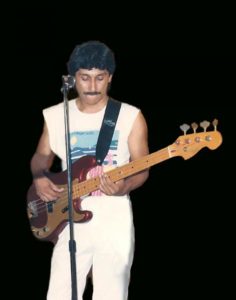
Combo la revelación, one of the first true salsa groups in Melbourne.
Diversity in the Scene
Given the diverse reasons for the emergence of the Melbourne salsa scene, there was also a diverse cross-section of the Melbournian public who attended the venues. There were those who were salsa aficionados; those who understood what salsa actually was, especially those of the generally middle-class and musically-educated stratum of the scene, or those who had perhaps travelled.[10]
Groups such as Combo la Revelación and Bahía, one of the many groups to follow in the stead of the originators, saw numerous Australian members moving through the ranks of their brass sections over the years, and Kenny López’s Sex Mambo, a group which used to draw heavily on salsa influences and which had played at Café Clicquot over the years, was described by its creator López as a ‘Latin-comedy band’, one which consisted of musically-educated Australians such as the highly-regarded Sally Ford and López himself.[11]
Salsa or Latin Music?
It was equally true, however, that the term ‘salsa’ was quickly becoming an umbrella term which referred to various styles of tropical Latin dance music. While salsa tended to make up the larger part of these styles, the term was often used irrespective of whether merengue or the chachachá actually were part of the spectrum. Many people at the early venues, which were essentially some of the first ‘Latin night’ institutions, were laymen who were attracted either by the mounting hysteria of commercially-marketed Latin music, or by the excitement and unique ambience that such clubs had to offer.[12]
Places such as Café Clicquot, which often had a line of people stretching down the busy urban thoroughfare on weekends, reflected the interest in music identified as non-western, and it featured groups such as Los Rumberos, who were, at that time, a cover band of the Gipsy Kings.[13] The final years of the 1980s witnessed the beginning of the trend of various radio stations hosting programs and specials based around Latin-themed music, a development which would foreshadow the arrival of the ‘Latin music’ boom.[14]
In the next episode of the history of Salsa and Latin music in Melbourne, we’ll look at the famous 90s Latin music scene in Melbourne alongside the worldwide explosion of Latin rhythms in the 1990s. How did this effect the city of Melbourne? You can read about it here!
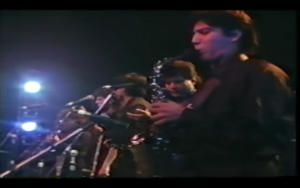
An ensemble of musicians from la Bahia, los Rumberos and other groups perform in 1992 for Nelson Mandela.
Share this article!
